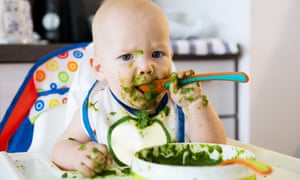HRK News Bureau | New Delhi | Thursday, 16 August 2018
Source: (16/08/2018).
(16/08/2018).
According to a World Bank report, two‐thirds of India’s current
workforce was stunted in childhood and that's affecting their income.
171 million children under the age of five were stunted in the
year 2014. According to the World Bank, this phenomenon, wherein
children are excessively short for their age, is affecting their income
levels.
Stunting in childhood is worrisome because it is associated with adverse outcomes throughout the life cycle. The undernourishment and disease that cause stunting impair brain development, leading to lower cognitive and socio-emotional skills, lower levels of educational attainment, and hence, lower incomes.
According to a World Bank report, two‐thirds of India’s current workforce was stunted in childhood.
Data reveals that on an average, an additional centimeter in height translates into 1.7 per cent higher wages in the labour market.
The rationale is that, had the stunted members of the current workforce not been stunted in childhood and attained regular height, they would not have suffered impaired cognitive development in their early years, nor would they have received less education.
Their income today would have been higher by a percentage that reflects the education penalty associated with childhood stunting, the returns to education, the adult height penalty to childhood stunting, the returns to height, the cognitive skills penalty to childhood stunting, and the returns to cognitive skills.
The average reduction of wages due to stunting for South Asia was 10 per cent, while that for North America was two per cent. The Middle East and North Africa do better, with a reduction of four per cent, compared to Europe and Central Asia with a reduction of five per cent.
© 2016 HR Katha Stunting in childhood is worrisome because it is associated with adverse outcomes throughout the life cycle. The undernourishment and disease that cause stunting impair brain development, leading to lower cognitive and socio-emotional skills, lower levels of educational attainment, and hence, lower incomes.
According to a World Bank report, two‐thirds of India’s current workforce was stunted in childhood.
Data reveals that on an average, an additional centimeter in height translates into 1.7 per cent higher wages in the labour market.
The rationale is that, had the stunted members of the current workforce not been stunted in childhood and attained regular height, they would not have suffered impaired cognitive development in their early years, nor would they have received less education.
Their income today would have been higher by a percentage that reflects the education penalty associated with childhood stunting, the returns to education, the adult height penalty to childhood stunting, the returns to height, the cognitive skills penalty to childhood stunting, and the returns to cognitive skills.
The average reduction of wages due to stunting for South Asia was 10 per cent, while that for North America was two per cent. The Middle East and North Africa do better, with a reduction of four per cent, compared to Europe and Central Asia with a reduction of five per cent.
Source:


